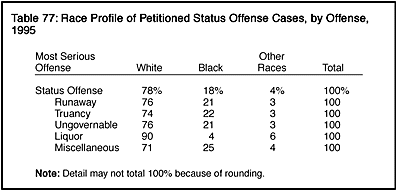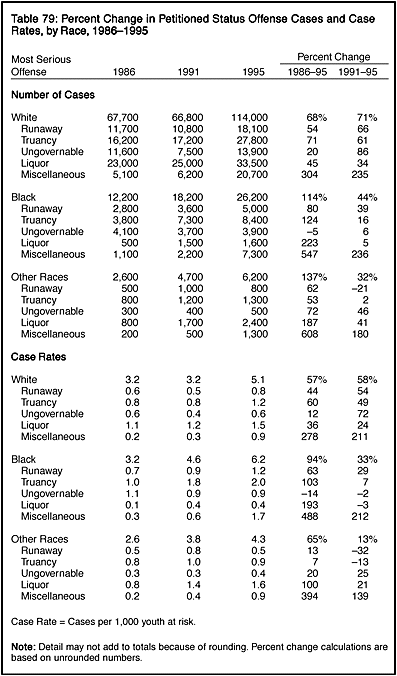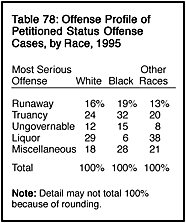|
 Between 1986 and 1995, the number of petitioned status offense cases involving white juveniles increased 68%, while the number of cases involving black youth rose 114%, and those involving youth of other races grew 137% (table 79). The growth in cases varied across offense categories for all three race groups. The only decline was for ungovernability cases involving black youth (down 5%).  In 1995, the total status offense case rate for black juveniles (6.2 cases per 1,000) was greater than the case rates for either white youth (5.1) or youth of other races (4.3). In all offense categories except liquor violations, case rates for black youth were greater than corresponding rates fr whites or youth of other races. The rate of liquor cases, on the other hand, was lowest among black juveniles (0.4 cases per 1,000 youth at risk). The overall status offense case rate for white juveniles increased continuously with age in 1995, rising from 3.0 for 13-year-olds to 13.1 for 17-year-olds (figure 22). Case rates for black youth increased through age 15 and then dropped. For youth of other races, case rates peaked at age 16. Among the runaway, truancy, and ungovernability caseloads, the case rates of all racial groups peaked at age 15 or 16, then dropped (figure 23). In contrast, the rates of status liquor law violation cases increased continuously through age 17 for all racial groups. 4 In 1995, whites made up approximately 80% of the Nation�s youth population at risk. Nearly all youth of Hispanic ethnicity are included in the white racial category.
|
 Race
Race